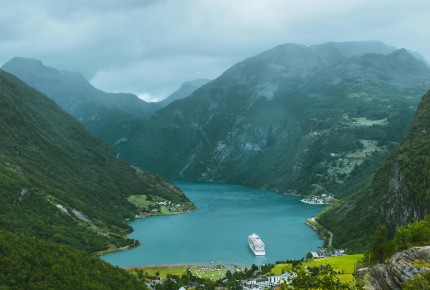Copyright © 2025 lmitac.com All Rights Reserved. Contact - Terms and Conditions - Privacy Policy - Quality Policy - Become an instructor - Vacancies - Sitemap
London Maritime Academy is a trade name for London Premier Groupversion: 2.9.0
London Maritime Academy is a trade name for London Premier Group

5/8/2025, 7:56:02 PM
Incat has launched the largest battery-electric ship in the world, which it claims is also the largest electric vehicle of its kind ever constructed, marking a significant milestone in the shipping industry.
Today, the China Zorrilla, a 14,000 gross tonne ferry being constructed for the Argentinean company Buquebus, floated from the building dock at the Incat shipyard in Hobart, Tasmania, Australia.
Originally ordered in 2019, it was marketed as the largest aluminium ship, with the intention of serving on the River Plate between Uruguay and Argentina.
Incat's Transition from LNG to Battery-Electric Drive
In 2023, Incat announced that they were looking into the possibility of replacing the planned LNG power plant with a battery-electric solution after talks with the shipowner had started. Four LNG-powered dual-fuel engines with a top speed of more than 40 knots were part of the original plan.
According to Incat, the ship is currently being outfitted with more than 250 tonnes of batteries and an Energy Storage System (ESS) with an installed capacity of over 40 megawatt-hours, enabling it to operate solely on battery power.
Globally speaking, Incat Tasmania collaborated with Wärtsilä and French ferry company Brittany Ferries in May 2024 to develop the technical specifications and design of a 137-metre zero-emissions vessel. This project was referred to as an “important step on the way to net-zero” by Christophe Mathieu, CEO of Brittany Ferries.
In addition, the ESS, provided by technology partner Wärtsilä, is four times larger than any other maritime installation in the world and is connected to eight electric-driven waterjets. The ESS system was supposed to be developed by Corvus Energy.
This combination of technology sets a new global standard for the shipping industry, according to the shipyard boats. Some have dubbed it a turning point for maritime sustainability.

A Landmark Project in Maritime Transport
According to Robert Clifford, chairman of Incat, the company intends to continue concentrating on electric (and hybrid) ferries in order to satisfy the increasing demand for these kinds of vessels in Australia. It also aims to keep up with the energy transition and decarbonisation momentum of the maritime transportation sector.
“This is a historic day – not just for Incat, but for the future of maritime transport,” stated Incat Chairman Robert Clifford. “We've been building world-leading vessels in Tasmania for more than four decades, and Hull 096 is the most ambitious, complex, and most significant project we've ever delivered. This ship changes the game.”
The interior of the ship, which will have a 2,300 square metre duty-free retail deck—the biggest shopping area on any ferry worldwide—will now be finished. Prior to sea trials on the River Derwent later this year, the last fit-out, battery installation, and energy system integration will be completed.
To refresh your memory, Incat Tasmania announced the ferry's structural completion in September 2024. As stated, the ship was redesigned to run entirely on battery-electric power in order to “achieve a greater sustainability level.” Originally, the ship was supposed to run on a clean fuel source.
According to earlier reports from Incat, the ship was expected to arrive before the year ended. It is the ninth ship built by Incat for Buquebus.
Ultimately, thanks to the new building's array of technological solutions, Incat Hull 096 is expected to reduce emissions of other harmful pollutants and save up to 37,545 tonnes of carbon dioxide (CO₂).
Read more news: